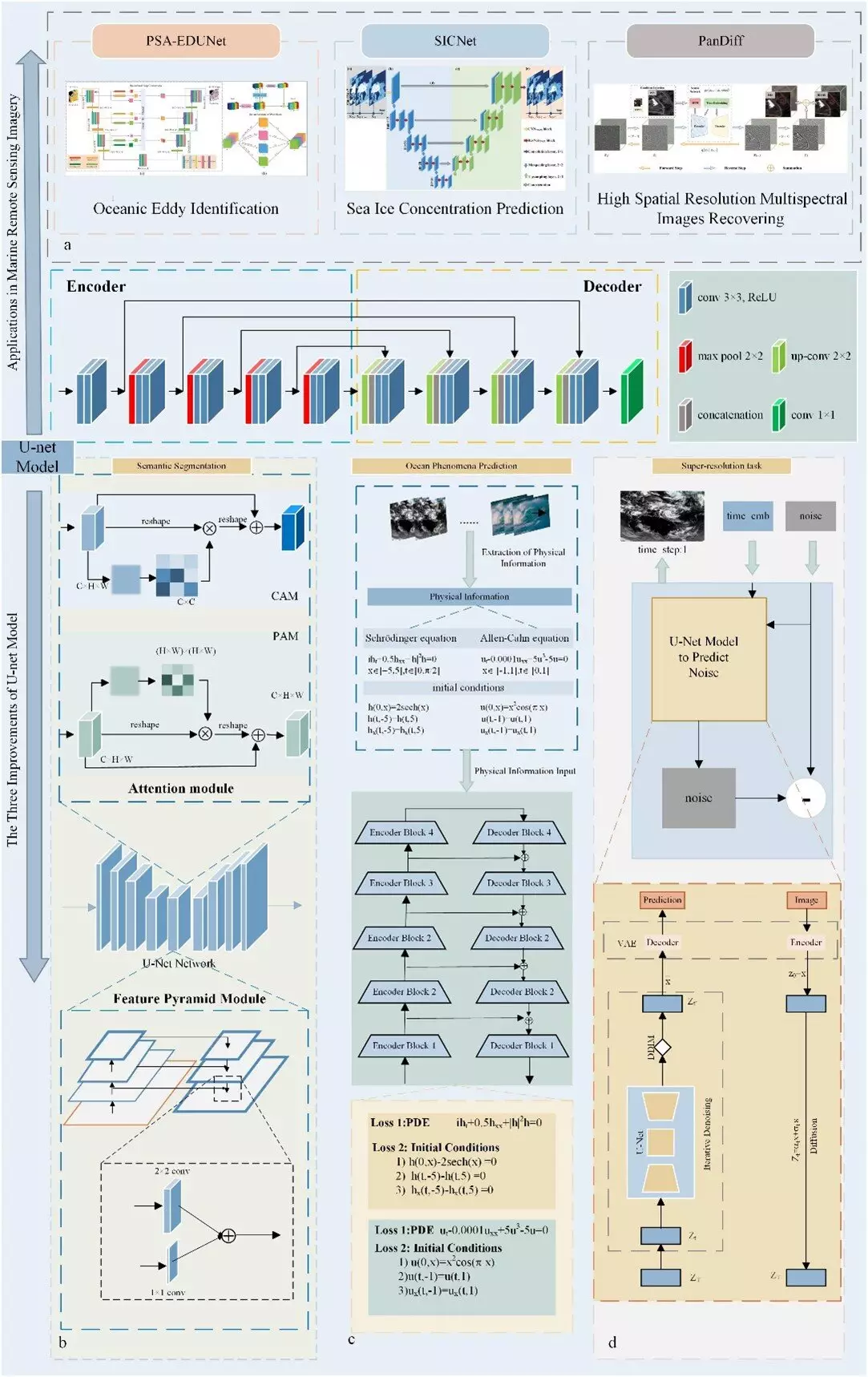In the realm of technology, few advancements have shown such promise in addressing various challenges as artificial intelligence (AI) has. One particularly compelling application of AI is in the field of remote sensing, especially concerning oceanographic studies. The U-Net model, a convolutional neural network (CNN) originally devised for segmenting medical images, is being scrutinized for its possible applications in ocean remote sensing. Researchers are optimistic about its potential, but the current iteration of U-Net leaves much to be desired. This article explores the nuances of U-Net’s utility in marine environments and discusses the avenues for enhancement proposed by recent studies.
U-Net’s architecture, characterized by its distinct encoder-decoder structure, allows for effective feature extraction and pixel-level classification. Initially tailored for medical imaging, where differentiating between healthy tissue and anomalies is crucial, U-Net captures fine details that could also benefit oceanographic analysis. Nevertheless, while its foundational structure is sound, there are limitations in effectively translating its medical application to the intricacies of the ocean. As articulated by researchers in a recent study published in the Journal of Remote Sensing, these limitations primarily center around segmentation, forecasting, and super-resolution tasks—each critical components of contemporary remote sensing methodologies.
The first area highlighted for improvement is U-Net’s semantic segmentation capabilities. This aspect is vital in differentiating various features in oceanic images, such as distinguishing between ice formations and open water. Enhancements to semantic segmentation could leverage advanced techniques such as attention mechanisms, which would enable the model to focus on key features within a broader spatial context. For example, detecting small marine objects against the backdrop of vast water surfaces necessitates a refined approach to pixel classification. By empowering U-Net with greater precision in identifying subtle variations, researchers could dramatically improve target detection and enhance the overall quality of marine data interpretation.
Forecasting ocean phenomena is intricate but essential for understanding changes in marine environments. U-Net’s ability to evolve into a predictive tool relies on its integration with data-driven methods that encapsulate both temporal and spatial dimensions. The Sea Ice Prediction Network (SIPNet) exemplifies a successful application of the U-Net framework for predicting sea ice concentration, demonstrating accurate forecasting over extended periods. The combination of encoder-decoder models with temporal-spatial attention modules yielded impressive accuracy, revealing U-Net’s potential for more predictive applications. To amplify forecasting capabilities, future iterations of U-Net must incorporate mechanisms to effectively utilize historical datasets while understanding and predicting marine dynamics.
Lastly, the enhancement of super-resolution tasks stands as a pivotal requirement for advancing U-Net’s efficacy in ocean remote sensing. The challenge of image noise or blurring can obscure critical data points, making it increasingly important to sharpen image quality. One proposed solution is the adoption of diffusion models to clarify images by mitigating noise through correlation analysis of high- and low-resolution images. For instance, the PanDiff model’s ability to fuse panchromatic and multispectral images could provide U-Net with a robust framework to generate clearer, more detailed representations of oceanic features.
While U-Net’s straightforward architecture and adaptability render it a favorite among researchers, the suggestions for refinement emphasize the importance of continual progress. Further exploration could involve integrating U-Net with other advanced algorithms or frameworks, fostering collaborative models that can push boundaries in oceanographic analysis. As emphasized by Xiaofeng Li, the potential for U-Net lies in not just optimizing its current capabilities but also in harmonizing its functionality with innovative techniques to meet the evolving challenges of marine research.
The landscape of ocean remote sensing is rich with opportunities to harness AI technologies like U-Net. By addressing its limitations in segmentation, forecasting, and super-resolution tasks, the research community can unlock new possibilities for marine analysis. As researchers continue to advocate for enhancements and integrations, the future of U-Net looks bright, promising significant strides in our understanding of ocean dynamics and the intricate phenomena within. The confluence of AI and marine research beckons us to tread carefully and thoughtfully as we navigate this transformative domain.


Leave a Reply